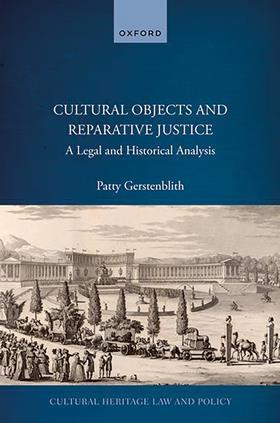Tugs of war over ancient treasures
Cultural Objects and Reparative Justice: A Legal and Historical Analysis
Patty Gerstenblith
£90, Oxford University Press
★★★★★
During a recent trip to London I visited the British Museum, which holds the Parthenon Sculptures (pictured) or the Elgin Collection as they are also known. As Patty Gerstenblith explains in her excellent book, one of the conditions of sale by Lord Elgin to the museum was that the sculptures were to be known as the Elgin Collection, so that ‘even the name by which these sculptures are known is a component of the debate, and one’s position is often signalled by the name employed’. The sculptures are at the centre of the debate concerning cultural appropriation and historical restitution; in part because they represent the pinnacle of the artistic and cultural achievement of Ancient Greece but also because the British Museum itself is an exemplar of the ‘universal museum’
The author takes us back to the 18th century and the development of the museum as a place in which one could trace the chronological development of human progress through a display of cultural objects from around the world. The idea of the universal museum coincided with imperial expansion by a number of European countries, including Britain. The removal of ancient artworks and cultural objects in the course of military conquest, colonialism and empire-building became an essential ingredient of the universal museum. Large-scale removal of cultural objects was justified by the presumed superiority of European culture and civilisation. Professor Gerstenblith explains how, at the same time, international law evolved to protect the economic interests of the colonising powers.

The universal museum developed from the idea that ‘culture’ was not something specific to a nation and its people but should be seen as the universal heritage of humankind. Universalism suggests that a cultural object belongs to the world and we should not be concerned with its location. Contextualism, on the other hand, emphasises the original location of the work of art and the understanding that derives from that context.
The British Museum also holds a large number of bronze plaques taken from Benin, now part of modern Nigeria, in 1897 by British forces during a ‘brutal, violent colonial episode’ (British Museum website). The plaques ‘gain local meaning from their depiction of historical events… once removed from their historical context, the plaques lost this aspect of their meaning’. Conversely, while universalism can become a justification for removal and retention, it can also be used to argue that the British Museum, or any other museum, has no absolute claim to a cultural object.
The current debate is centred on claims for the return of cultural objects, by countries including Greece and Nigeria, against arguments why objects should remain in a museum. The author analyses the complex legal and ethical considerations, including ‘the perennial issue of time and law’. The British Museum Act 1963 forbids the museum from disposing of its collections except in a small number of special circumstances.
The Parthenon Sculptures are now claimed as an inalienable part of the British national heritage which gives Britain a superior right to retain them. Museums may offer to lend objects to their country of origin but this requires an acknowledgment of the lender’s title to the objects. Successive Greek governments have refused a number of offers from the British Museum to loan the Parthenon Sculptures for this reason.
Professor Gerstenblith advocates a ‘paradigm of restitution’ including a rebuttable presumption of illegal acquisition, with the onus placed on the current possessor, together with other forms of compensation and the ownership of intellectual property rights.
This impressive book ‘follows an innovative, interdisciplinary approach based in law, history, art history, anthropology and archaeology’.
Kevin McVeigh is a partner at Elliott Duffy Garrett, Belfast





























No comments yet